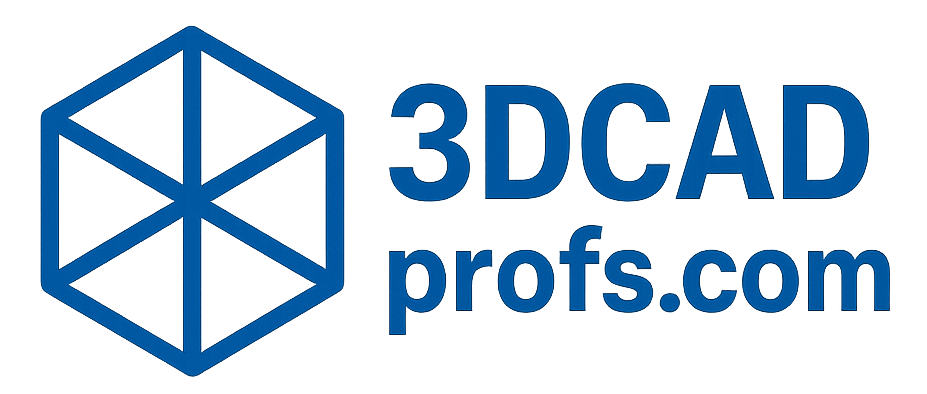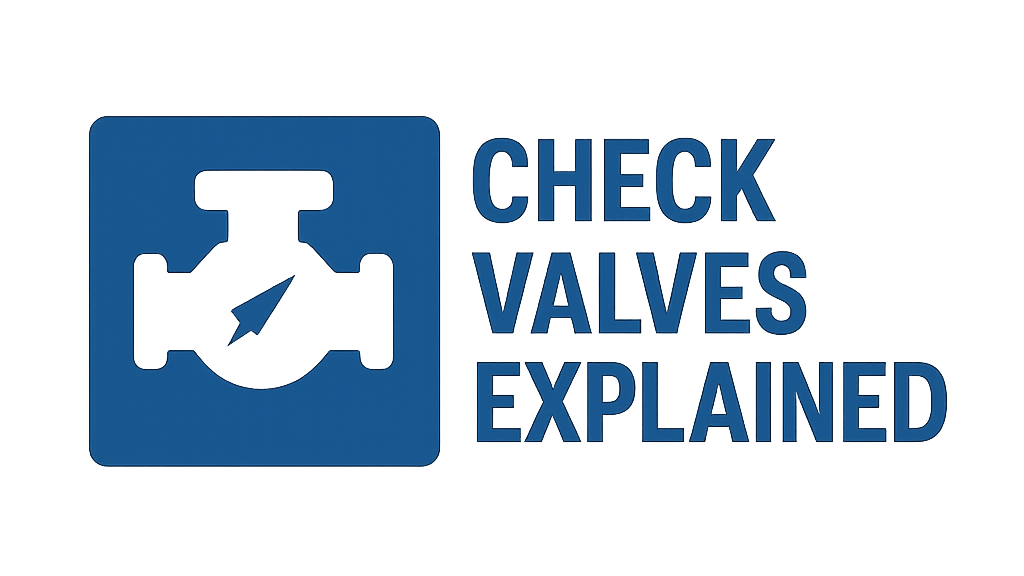Check Valves Explained
Guardians of Unidirectional Flow
Introduction to Check Valves
Check valves, also known as non-return valves (NRVs), are automatic valves that allow fluid (liquid or gas) to flow through them in only one direction. Their primary purpose is to prevent backflow in a system, which can protect equipment from damage, prevent contamination, or maintain pressure. Unlike most other valves, check valves do not require external actuation (manual or automated) to operate; they function based on the pressure differential across the valve.
Working Principle: Automatic Flow Control
Check valves operate automatically based on fluid flow and pressure:
- Forward Flow (Open): When the upstream pressure (inlet) is greater than the downstream pressure (outlet) by a certain amount (cracking pressure), the valve’s closing element (disc, ball, etc.) opens, allowing flow.
- Reverse Flow (Closed): If the downstream pressure becomes greater than the upstream pressure, or if flow stops, the closing element automatically moves to its seat, preventing backflow. Springs are often used to assist closing or for specific cracking pressures.
The design ensures that the valve closes before significant reverse flow velocity can develop, minimizing water hammer.
FLOW (OPEN)
NO BACKFLOW (CLOSED)
Key Components of a Check Valve
Valve Body
The main pressure-containing structure that houses internal parts and connects to the pipeline.
Disc / Closing Element
The movable part that blocks reverse flow. Can be a disc, ball, piston, or diaphragm.
Seat
The surface within the valve body against which the disc seals to prevent backflow.
Spring (Optional)
Often used to assist in closing the valve, especially in vertical installations or to provide a specific cracking pressure.
Hinge Pin (Swing Check)
The pivot point for the disc in a swing check valve.
Cover/Bonnet
Provides access to internal parts for maintenance on some check valve designs.
Main Types of Check Valves
Swing Check Valve
Disc swings on a hinge to open/close. Low pressure drop. Tilting disc variant reduces slamming and improves sealing at low pressures.
Lift Check Valve
Disc lifts vertically off the seat. Piston and ball types are common. Best for horizontal or upward vertical flow. Spring-assisted versions are common.
Ball Check Valve
A spherical ball moves to block or allow flow. Good for viscous fluids, slurries, or where debris might be present.
Diaphragm Check Valve
A flexible diaphragm flexes to allow flow and returns to its original position to prevent backflow. Good for low-pressure, corrosive, or sanitary applications.
Stop-Check Valve
Combines the automatic function of a check valve with a manual override (stem and handwheel) to positively shut off the valve, regardless of flow direction or pressure.
Wafer Check Valve
Compact, lightweight design that fits between flanges. Includes single disc (often spring-loaded) and dual plate (double door) types, which are spring-loaded for quick closing.
Key Terminology
- Cracking Pressure: The minimum upstream pressure differential required to begin opening the valve and allow flow.
- Reseal Pressure (Closing Pressure): The pressure differential at which the valve fully closes and achieves a tight seal against backflow.
- Cv (Flow Coefficient): A measure of the valve’s flow capacity when fully open. A higher Cv indicates lower resistance to flow.
- Water Hammer: A pressure surge caused by a sudden stop or change in fluid velocity. Check valves help prevent this by closing before significant reverse flow occurs.
- Slamming: The rapid, forceful closure of some check valve types (like basic swing checks), which can cause noise, vibration, and stress on the piping system.
- Backpressure: The pressure on the downstream side of the valve. If it exceeds upstream pressure, the check valve closes.
Advantages & Disadvantages
Advantages
- Automatic operation – no external power or manual intervention needed.
- Prevents backflow, protecting equipment (pumps, compressors) and processes from damage or contamination.
- Relatively simple design and often cost-effective.
- Available in a wide range of sizes, materials, and pressure ratings.
- Can help mitigate water hammer effects.
- Essential for safety in many systems.
Disadvantages
- All check valves introduce some pressure drop to the system.
- Can be a source of noise or vibration if not correctly selected or installed (e.g., valve slam).
- Internal moving parts are subject to wear, especially in pulsating flow or with abrasive fluids.
- Not designed for throttling or flow regulation.
- Some types are sensitive to installation orientation (e.g., non-spring-loaded lift checks).
- Potential for sticking open or closed due to debris or internal wear if not maintained.
- Limited external indication of valve position (open/closed).
Common Materials of Construction
Body
- Brass, Bronze (water, air, low pressure)
- Cast Iron, Ductile Iron (general utilities)
- Carbon Steel (WCB, LCC – general industrial, oil & gas)
- Stainless Steel (CF8M/316, CF8/304 – corrosive, cryogenic, high temp)
- Alloy Steels (WC6, WC9, Monel, Hastelloy – severe service)
- Plastics (PVC, CPVC, PP, PVDF – corrosive, low pressure)
Disc & Seat
- Metal (Stainless Steel, Bronze, Stellite® overlay for hardness)
- Resilient/Elastomeric (BUNA-N/Nitrile, EPDM, Viton®/FKM, PTFE, Neoprene) for tight shutoff and lower temperatures.
- Combination (e.g., metal disc with resilient insert).
Typical Applications
Check valves are critical in countless systems to ensure unidirectional flow:
Key Selection Considerations
- Fluid Type & Properties: Liquid, gas, steam, slurry; corrosiveness, viscosity, presence of solids.
- Operating Conditions: Pressure, temperature, flow rate (min, normal, max), potential for pulsation or surges.
- Allowable Pressure Drop: Different types have varying pressure drop characteristics.
- Installation Orientation: Horizontal, vertical upflow, vertical downflow (some types are restricted).
- Cracking Pressure: Minimum pressure differential required to open the valve. Low cracking pressure for gravity flow, higher for spring-loaded.
- Shutoff Tightness: Metal-seated vs. resilient-seated for bubble-tight or specific leakage class.
- Slam Characteristics: Potential for valve slam and water hammer; consider non-slam or damped types.
- Size and End Connections: Must match the pipeline.
- Material Compatibility: Body, disc, seat, and spring (if any) must be compatible with the fluid and environment.
- Maintenance Requirements & Accessibility.
- Cost and Availability.
- Industry Standards & Codes: API 594, API 6D, ASME B31.1, etc.
Installation & Maintenance Tips
Installation
- Verify Flow Direction: Always install with the flow arrow on the valve body pointing in the correct direction of flow.
- Correct Orientation: Install according to manufacturer’s recommendations (horizontal/vertical). Some lift checks must be vertical or horizontal only.
- Accessibility: Ensure the valve is accessible for inspection and maintenance if it has a cover or bonnet.
- Pipe Support: Provide adequate support for the valve and adjacent piping to prevent stress.
- Cleanliness: Ensure the pipeline is free of debris before installing the valve.
- Upstream/Downstream Pipe Runs: Some types may benefit from straight pipe runs to ensure stable flow patterns.
Maintenance
- Regular Inspection: Periodically check for external leaks, unusual noises (like slamming), or signs of damage.
- Operational Checks: If possible, verify proper opening and closing during system operation or shutdowns.
- Internal Inspection (During Shutdowns): For maintainable types, inspect disc, seat, hinge pins, and springs for wear, corrosion, or debris accumulation.
- Cleaning: Clean internal components if handling fluids that may cause fouling or scaling.
- Part Replacement: Replace worn seats, discs, springs, or gaskets as per manufacturer recommendations or inspection findings.
- Record Keeping: Maintain records of inspections and maintenance activities.
Silent Sentinels of System Integrity
Check valves are essential, often unseen, components that play a critical role in the safety, efficiency, and reliability of countless fluid systems. Their automatic operation to prevent unwanted backflow protects valuable equipment, maintains process conditions, and prevents contamination. While seemingly simple, the correct selection, installation, and maintenance of check valves are vital for ensuring the long-term integrity and performance of any piping installation.

